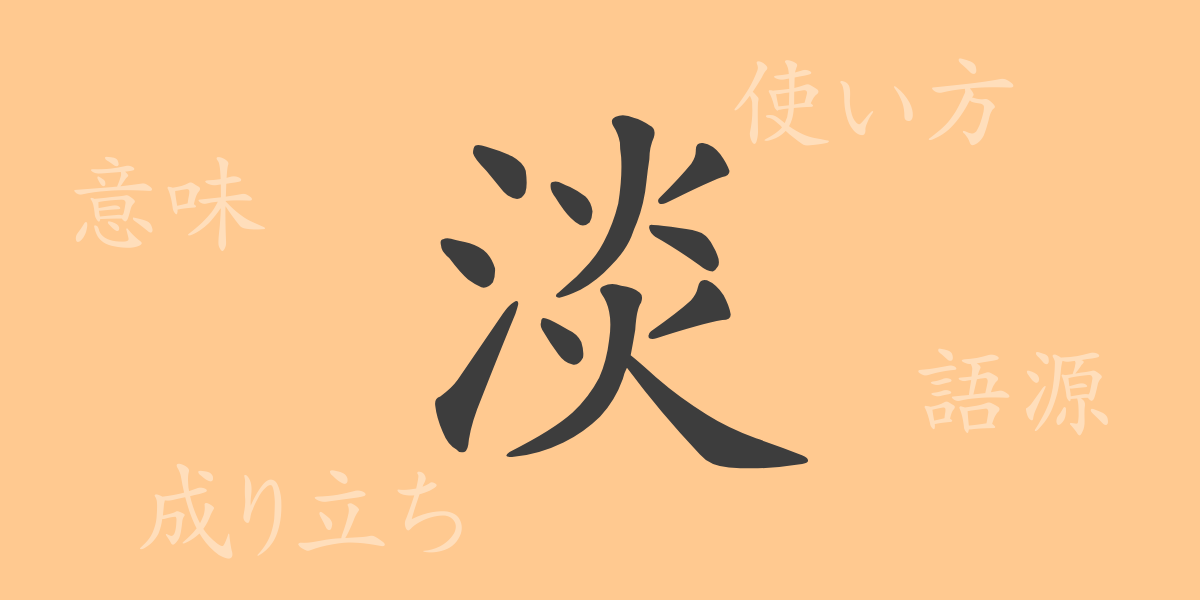The Japanese kanji ‘淡’ (タン) (tan), emblematic of the beauty of the Japanese language, encapsulates serene colors, emotions, and an aspiration for the ephemeral. This character, frequently encountered in daily life, holds a history and meanings that are perhaps less widely known. In this article, we will explore the world of ‘淡’, unraveling its origins, meanings, usage, and the phrases and proverbs associated with it.
Origins of ‘淡’ (タン) (tan)
The kanji ‘淡’ originated from an ancient Chinese pictograph representing water that is scant and light. Initially combining the symbol for a river with a mark indicating small quantity, it depicted a minimal amount of water. Over time, it evolved into the current ‘淡’, embodying meanings such as light in color or taste, and ephemeral in nature.
Meaning and Usage of ‘淡’ (タン) (tan)
‘淡’ signifies lightness in color or taste, calm emotions, scant interest, or transience. For instance, ‘淡い色彩’ (あわいいろさい) (awairo) refers to pale, gentle colors, and ‘淡い思い’ (あわいおもい) (awai omoi) represents mild feelings. The character is also used in terms such as ‘淡泊’ (たんぱく) (tanpaku) and ‘淡々’ (たんたん) (tantan), describing a demeanor that is subdued in passion or emotion.
Readings, Stroke Count, and Radical of ‘淡’ (タン) (tan)
The kanji ‘淡’ has several readings and its structure provides important insights:
- Readings: On’yomi ‘タン’ (Tan), Kun’yomi ‘あわ-い’ (awai), ‘あわ-る’ (awaru)
- Stroke Count: 12 strokes
- Radical: 水 (みず、さんずい) (mizu, sanzui)
Phrases, Proverbs, and Idioms Using ‘淡’ (タン) (tan) and Their Meanings
There are numerous idioms and phrases involving ‘淡’, each carrying unique meanings and nuances:
- 淡水 (たんすい) (tansui): Freshwater, as opposed to seawater.
- 淡路島 (あわじしま) (Awajishima): The name of an island in Hyogo Prefecture.
- 淡々と (たんたんと) (tantanto): Proceeding quietly without displaying much emotion.
- 淡泊な人 (たんぱくなひと) (tanpaku na hito): A person who is unenthusiastic or lacks passion.
- 淡い恋 (あわいこい) (awai koi): A lukewarm romantic feeling.
Summary on ‘淡’ (タン) (tan)
The kanji ‘淡’ intertwines with Japanese aesthetics and emotional expression, depicting not only lightness in color and taste but also in human emotions and behaviors. This character, conveying subtlety in feelings and actions, deepens the complexity of the Japanese language. Through this exploration, we hope you’ve gained insight into the multifaceted allure of ‘淡’, remembering its rich expressions and meanings in everyday encounters.

























